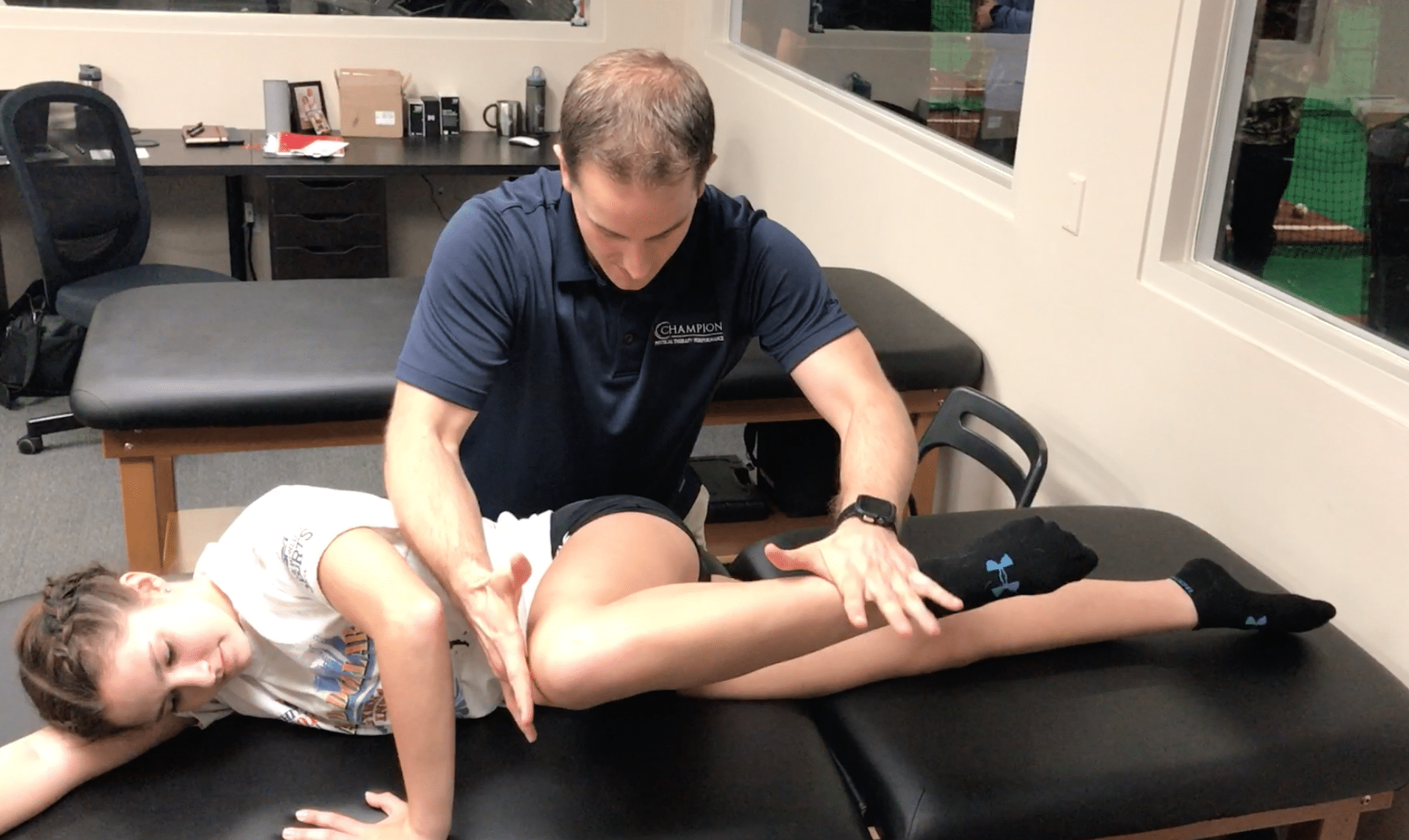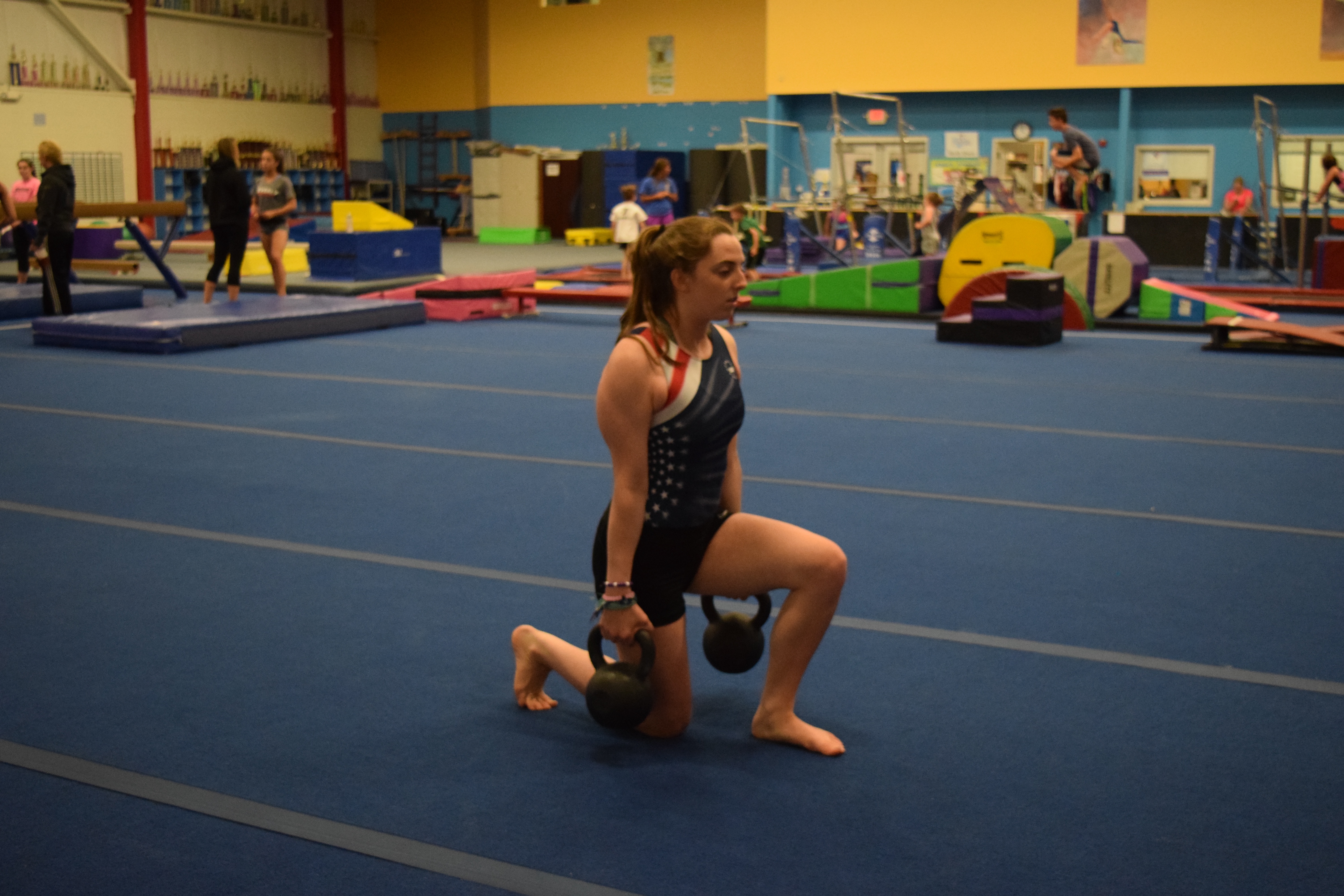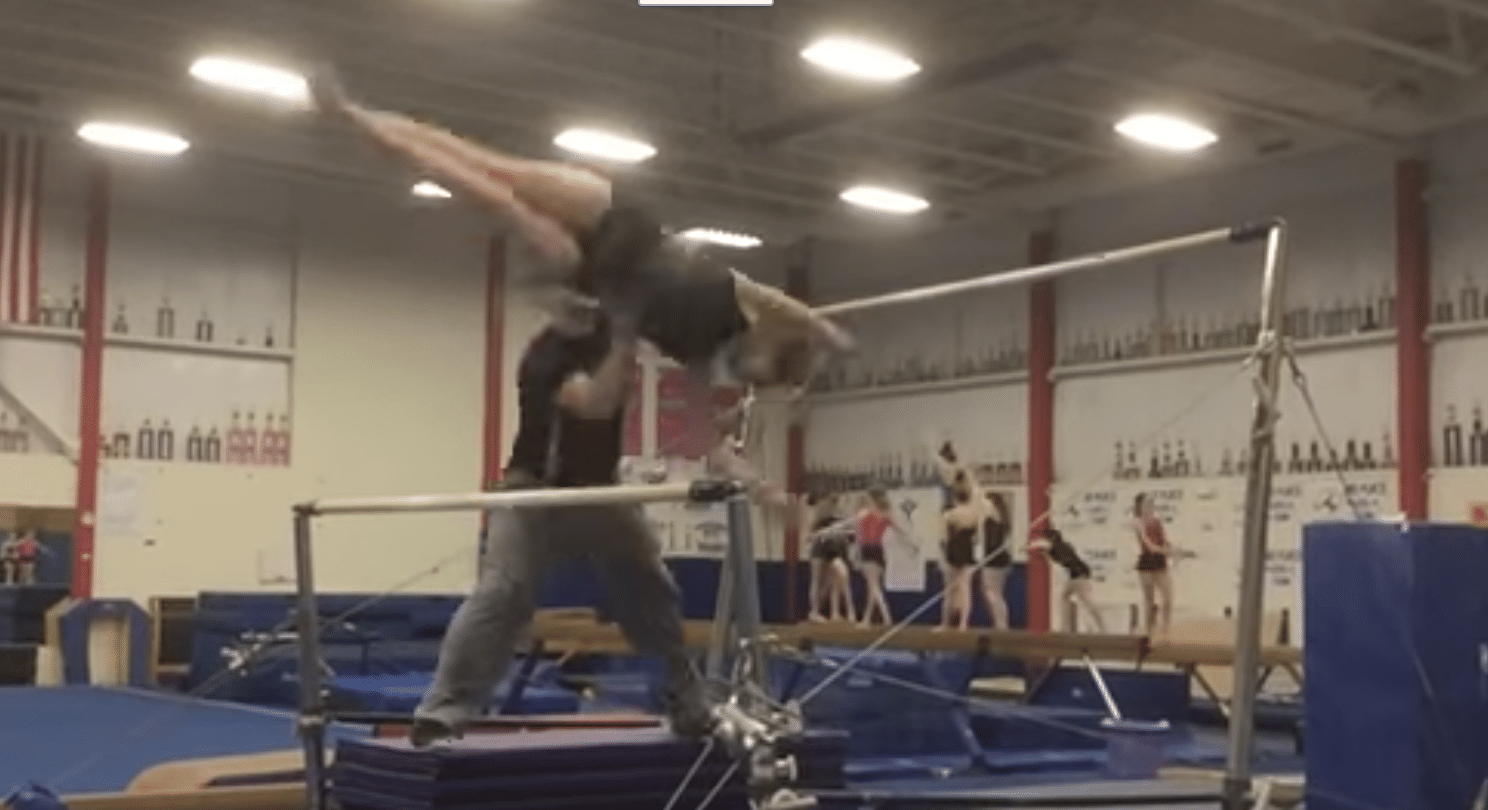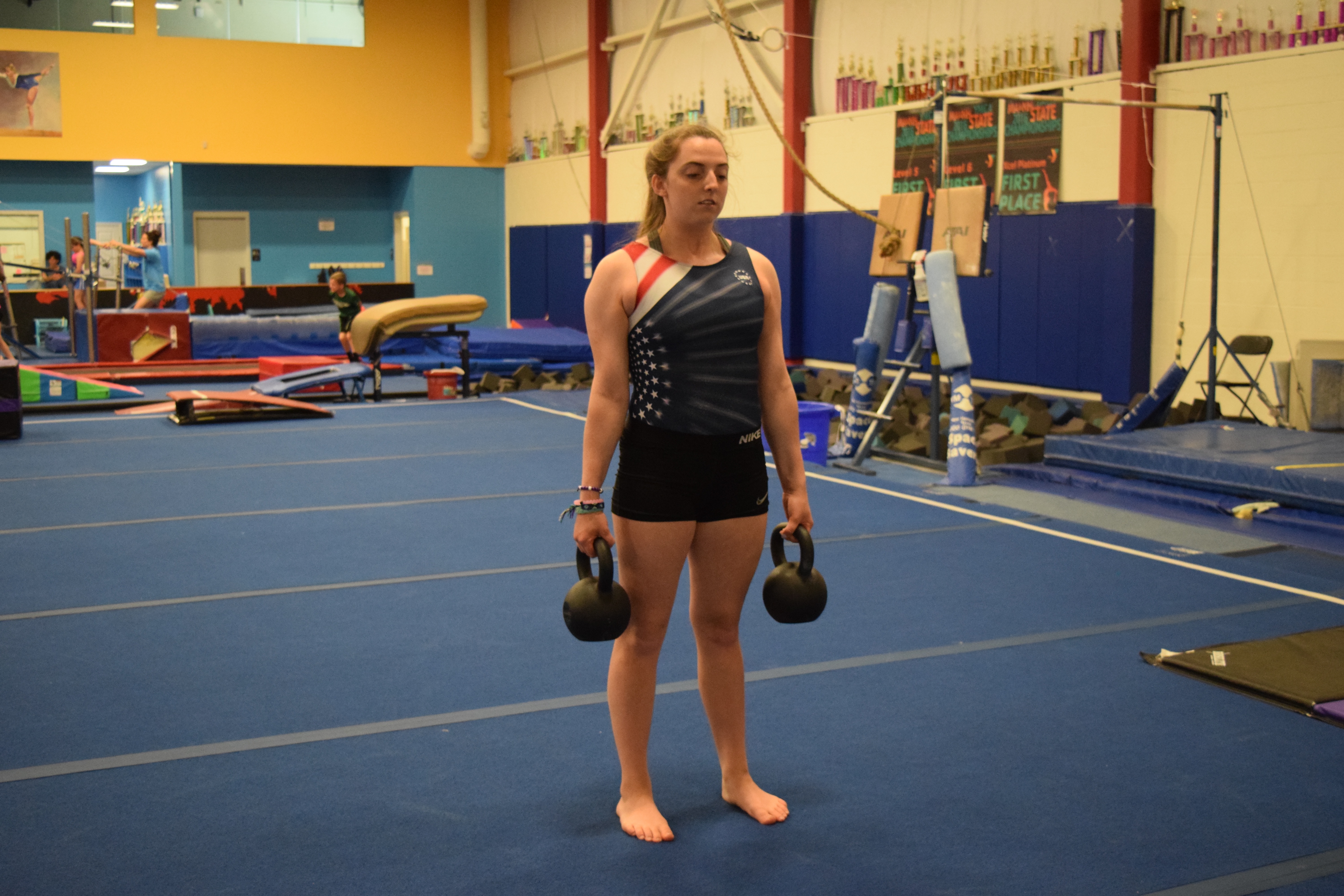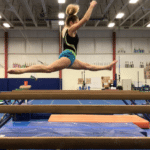Treating Gymnasts with “Chronic Hip Flexor Strains” – From Clinic To Practice #6b
Last week in Part 1 of this article, I went over the background and current research concepts for a lot of gymnasts I have been treating with micro instability based hip injuries. This week I wanted to talk about one more contributive factor, and then dive into all of the practical treatment concepts I think gymnastics as a whole needs to consider. Even though this may be more on the medical side gymnastics coaches, parents, and athletes themselves should really utilize this article to implement ideas into training on the preventative side.
Remember you can read all my thoughts on hip injuries for fee in my recently released, “Gymnastics Medical Care Guide” here,
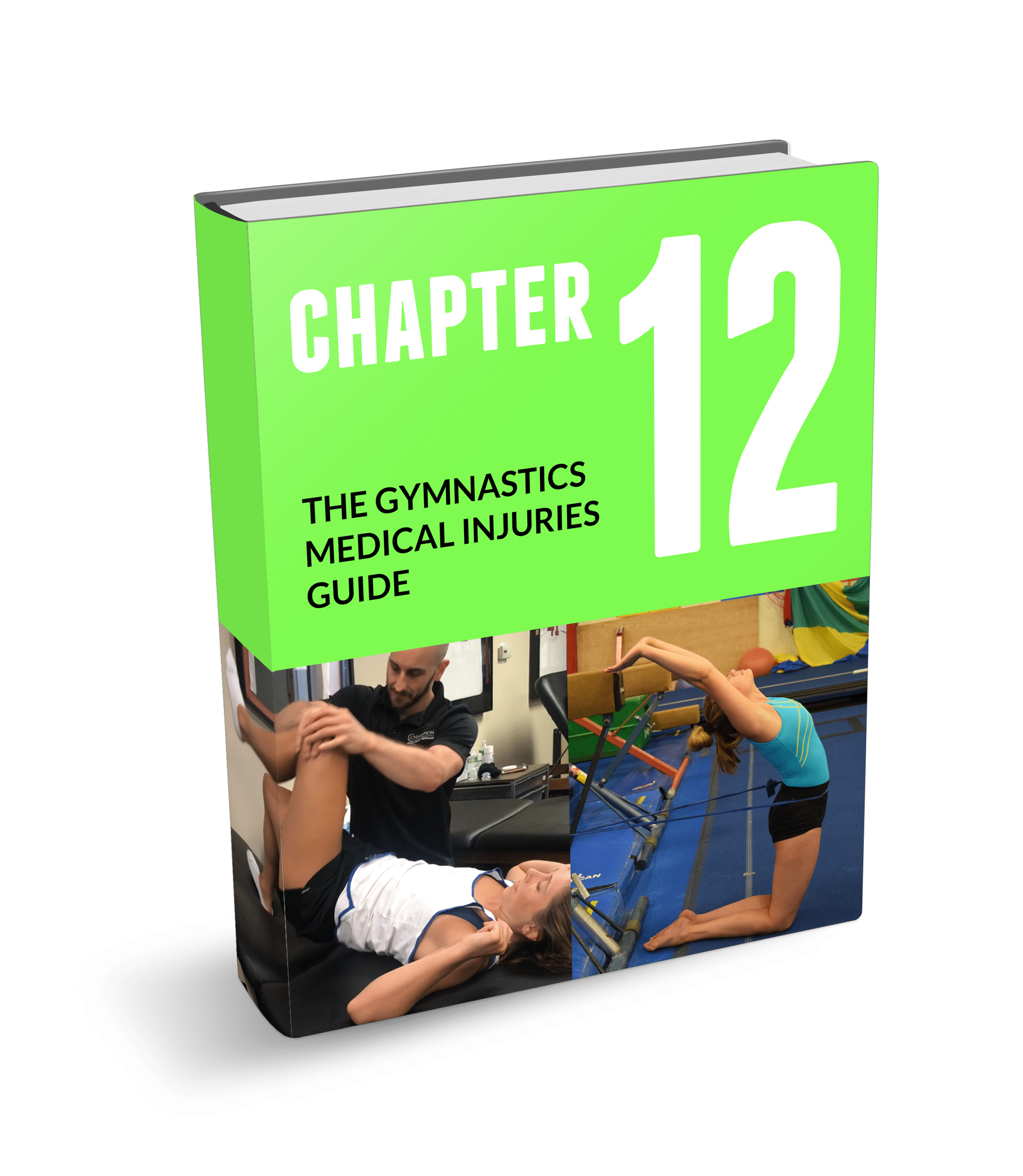
Table of Contents
The Gymnastics Medical Injuries Guide
- Understand the most common injuries in male and female gymnastics, why they occur, and how to prevent them
- Read about the most current science on injuries and rehabilitation in gymnastics
- Get tips on the latest injury risk reduction and rehabilitation practices
We take our privacy seriously and will never share your information. Click here to read our full privacy policy.
Caution Too Much Volume Increase in Short Amount of Time
The last contributing factor for all of these hip injuries really came down to training load and recovery ratios. This was something that I learned first hand over the last 2 seasons, as we had more optional level girls within our program compared to when I first started. It’s really easy with competition season in full swing to let the numbers of jumps, leaps, in bars, or other demanding hip skills stack up. We have to remember that both under loading and overloading the athlete can be problematic. In all of these gymnasts cases, there was a theme that a sudden increase in training volume/routines for competition had occurred leading up to their hip injury.

For two of the gymnasts that have come to see me for treatment, the use of ankle weights for jumps and leaps was part of the equation (see this article for more of my thoughts on ankle weights). For another, she had had a sudden increase into lots of beam, floor, and inbars getting ready for competitive season. In the case of the gymnast I coach, it was towards the end of the year and we were trying to do well across a few months of championship meets. I learned a tough lesson that things can quickly catch up if you don’t monitor the volume, and dose appropriately week to week.
For those curious about these thoughts much more in depth, check out this popular article I wrote a few months ago related to preseason training that includes some great articles from the British Journal of Sports Medicine on training load.
Treatment and Rehab Concepts
1. Restore Soft Tissue Mobility and Range if Applicable
As I noted last week in Part 1, not every case of hip microinstability is a super lax more or more “gumby” type athletes. Gymnasts (any many other athletes) can have capsular laxity with soft tissue mobility restrictions still being present. Also remember, gymnasts may be stretching out their capsular and ligamentous static stabilizers through years of doing high level gymnastics skills or by applying not the best flexibility methods.
Despite it still being theoretical, I tend to believe that when the passive tissue is stressed it leads to protective guarding from the dynamic stabilizers, especially after a recent bout of sudden irritation. Through years of sports certain soft tissue adaptations can occur if the athlete has not been doing regular maintenance care for themselves. If someone has soft tissue tissue limitations upon exam, it’s really important we address them. This usually comes with manual therapy, gentle self soft tissue work to affect tone, and teaching about correct active soft tissue vs capsular stretching.
2. Increase Baseline Hip and Correct Strength Imbalances
A huge staple in the rehabilitation for the gymnasts who have come to see me at Champion were periodized strength programs for their glutes (max, min, med) and hamstrings, as well as the deeper and often overlooked hip stabilizer muscles. I tend to program their rehabilitation with basic strength exercises first, then progress to power / rate of force development, then higher level compound strength movements, and then finally while also stability exercises and gymnastics specific patterns. We first worked from mid range of non painful while the tissue calmed down, and then progressed to end ranges of motion with more demand that was gymnastics specific.
People are quick to knock isolated and “non functional” training methods, but I think this is a really big mistake. Obviously we won’t be doing sidelying leg lifts and clamshells for a month, but half the reason many hyper mobile athletes develop pain is due to their lack of strength in smaller or more stability based muscles. Remember the hip is subject to huge force under sporting conditions, and it’s crucial that we have strength of all the muscles involved around the hip acting as dynamic stabilizers and buffer these huge forces. I’m all about half kneeling and crawling exercises as one part of the dynamic stability piece, but at a fundamental level their lack of strength needs to be addressed. On that note though, as rehabilitation specialists we must follow the available strength and conditioning literature to write programs that actually foster adaptation. I think going back to master the basics was one of the key components to these gymnasts getting back to training later on.
Weighted Hip Lifts –
Weighted hip lifts are something I think should be fundamental into a gymnast’s (and many other sports/general population’s) strength program. It has enormous benefit for glute and posterior chain development when utilized properly. Getting end range glute control is something that will not only promote power, but also theoretically helps to create better joint stability during loaded and more dynamic gymnastics skills.
Manual Eccentric Hip Strength
Manual table versions of hip eccentrics can also be a fantastic way to increase the challenge for athletes, while also applying some intermittent rhymes stabilization’s at their end ranges. Remember from last week the end range of motion tends to be the most problematic for these athletes as passive tissue strain tends to occur or it may be where boney extrarticular “fulcrum” based approximation may occur. For this reason, I feel it’s crucial they are strong and controlled through full ranges.
https://www.youtube.com/watch?v=hdKnCCXg-g4
From here, things progress to more complex hip strength exercises, more loading, rate of force development emphasis, and so on.
3. Train High Level Dynamic Stability
Manual Hip Rhythmic Stabilizations –
Just as with the shoulder, it’s important the hip stabilizers work in both closed and open chain to mimic sporting demands seen in aesthetic sports. I have studied the shoulder instability literature extensively thanks to the work of Mike Reinold, Lenny Macrina, and others who I am fortunate to work with closely. By combining their concepts, the current hip instability / anatomical research, and my thoughts as a gymnastics coach, similar treatment styles have emerged that have been really helpful. One of these is using rhythmic stabilizations.
https://www.youtube.com/watch?v=aD7kyN67AqU
The start of this next exercise progression was sparked by Dr. Josh Eldridge, so shout out to him. I’m a fan of elevating the athlete on a bench so their hip starts in a neutral position for circles, doing sets both on their back and on their side for different glute bias. It’s also a good way to hopefully try and transfer some of the manual work to a home program.
Beyond this as many people know, there are tons of great 1/2 and tall kneeling progressions, then progressions to kettle bell work that force lots of single leg hip control in a weight bearing situation.
4. Progression To Sport Specific Demands
Curled Up Hip Series –
Just as any other sport would progress rehab to higher level demands, the same goes for gymnastics and other aesthetic sports. These curled up hip exercises aren’t new, as I talked about them a year or so ago when trying to promote preventing lower back overload during skills. This is more towards the end range of rehabilitation to help prevent end range stress, and build up control that will eventually transfer to skills.
From here there are hundreds of other great jumping, leaping, and active flex drills to program.
5. Objective Return to Sports Plan
Another piece of the throwing literature I have adopted to gymnastics are objective return to skill plans. Just as a pitcher would go with a pitch count and throwing program, I design similar programs for gymnasts. All of the best strength, stability, and skill specific rehab can quickly be thrown out the window if we don’t respect the basic principle of adaptation. Once injury occurs, we must progressively stress and recover tissues, promoting the tissue to adapt back above it’s prior level of capacity. I take the numbers of jumps, leaps, inbar skills, and more then allow for interval programming with continued homework on the plans from above. I feel this is one step we often miss in many sports, despite it being so present in a few like baseball.

Want To Learn More?
For those that found this post interesting, be sure to check out the “SHIFT Gymnastics Educational Series: Vol 1” that was just released a few weeks back. Through 230 pages and 7 chapters I dive into way more depth about hip/shoulder flexibility, advanced core training, preventing back pain, and more!
Concluding Thoughts
So that is all for now. I hope that these two articles have been helpful for people, although they are really the tip of the iceberg in this field. I do know that a lot of these concepts have not been carried out in research studies as we have for things like shoulder instability. This is my first step in putting together theoretical constructs, and I hope to keep evolving as I learn more. Each case will be individual in it’s own nature, but there are definitely some emerging themes. That’s all for now, thanks for reading and best of luck!
Dave Tilley DPT, SCS
References
- Dumount GD. Hip Instability: Current Concepts and Treatment. Clinics in Sports Medicine July 2016Volume 35, Issue 3, Pages 435–447
- Skendzel, et al. The Approach to the Evaluation and Surgical Treatment of Mechanical Hip Pain in the Young Patient.
- Weber, et al. The Hyperflexible Hip Managing Hip Pain in the Dancer and Gymnast. Sports Health: A Multidisciplinary Approach April 23, 2014
- Shibata, K.R., Matsuda, S. & Safran, M.R. Is there a distinct pattern to the acetabular labrum and articular cartilage damage in the non-dysplastic hip with instability? Knee Surg Sports Traumatol Arthrosc (2016). doi:10.1007/s00167-016-4342-4
- Kalisvaart MM, Safran MR. Microinstability of the hip—it does exist: etiology, diagnosis and treatment. J Hip Preserv Surg (2015) 2 (2):123-135.doi: 10.1093/jhps/hnv017

